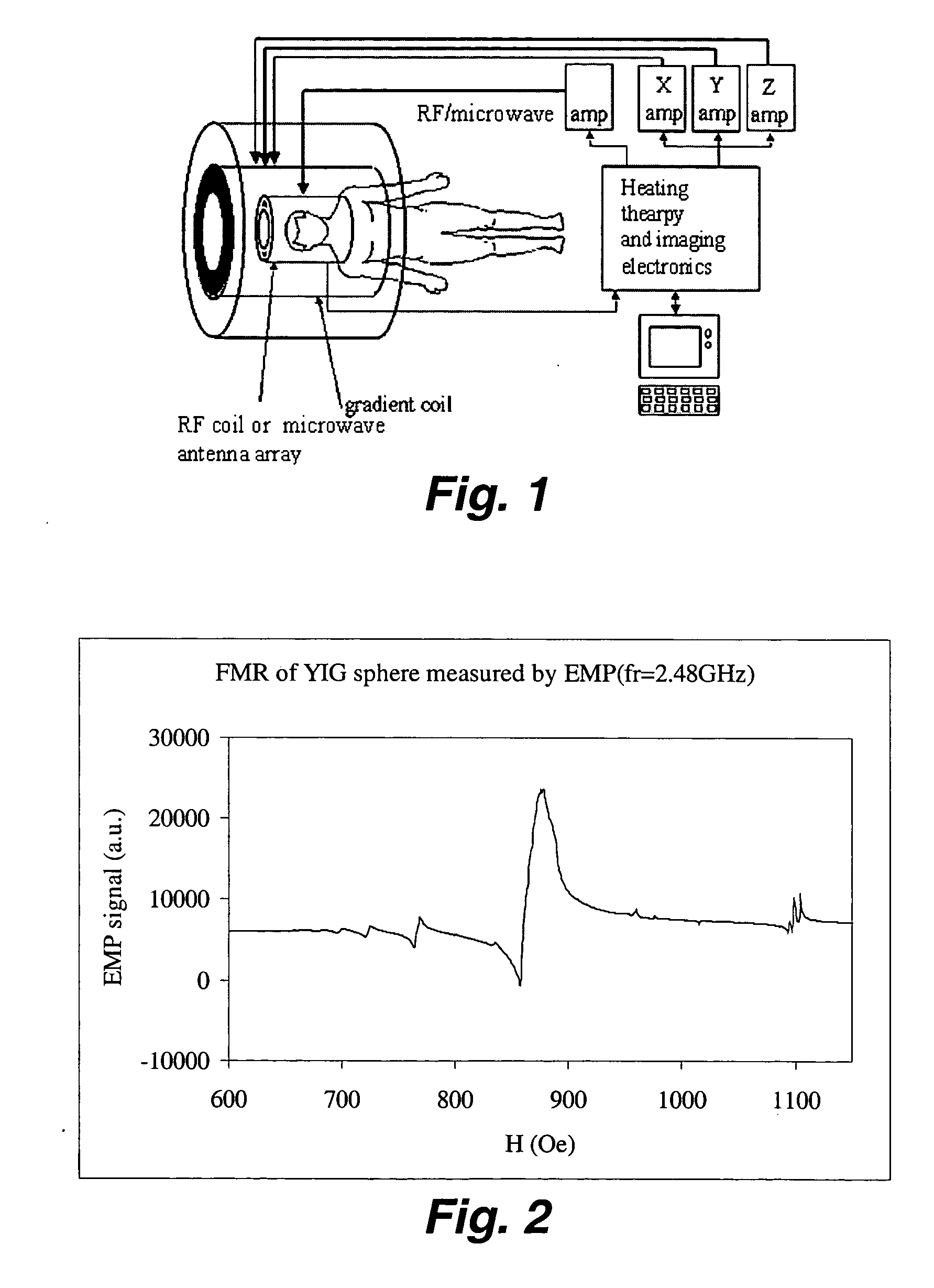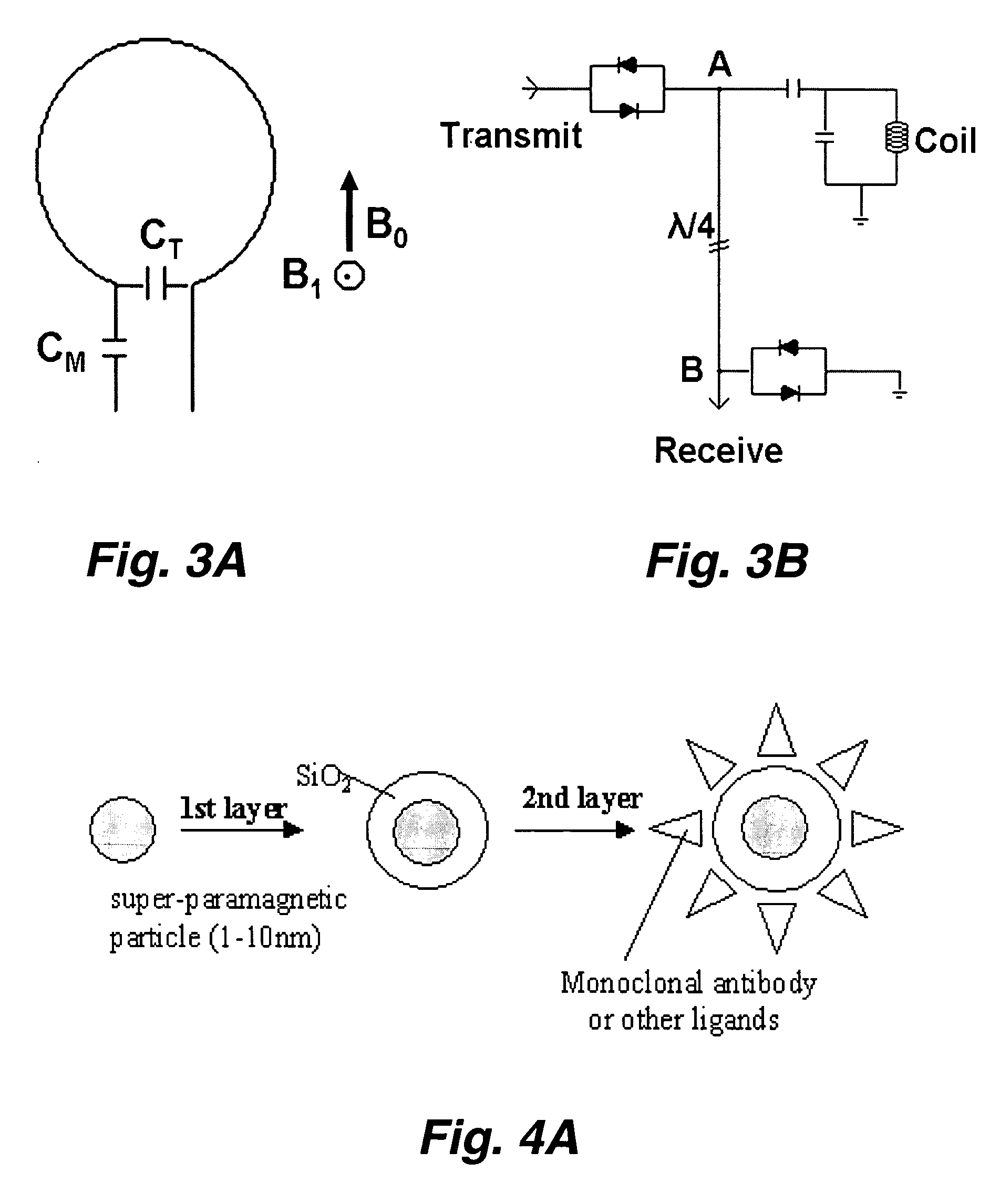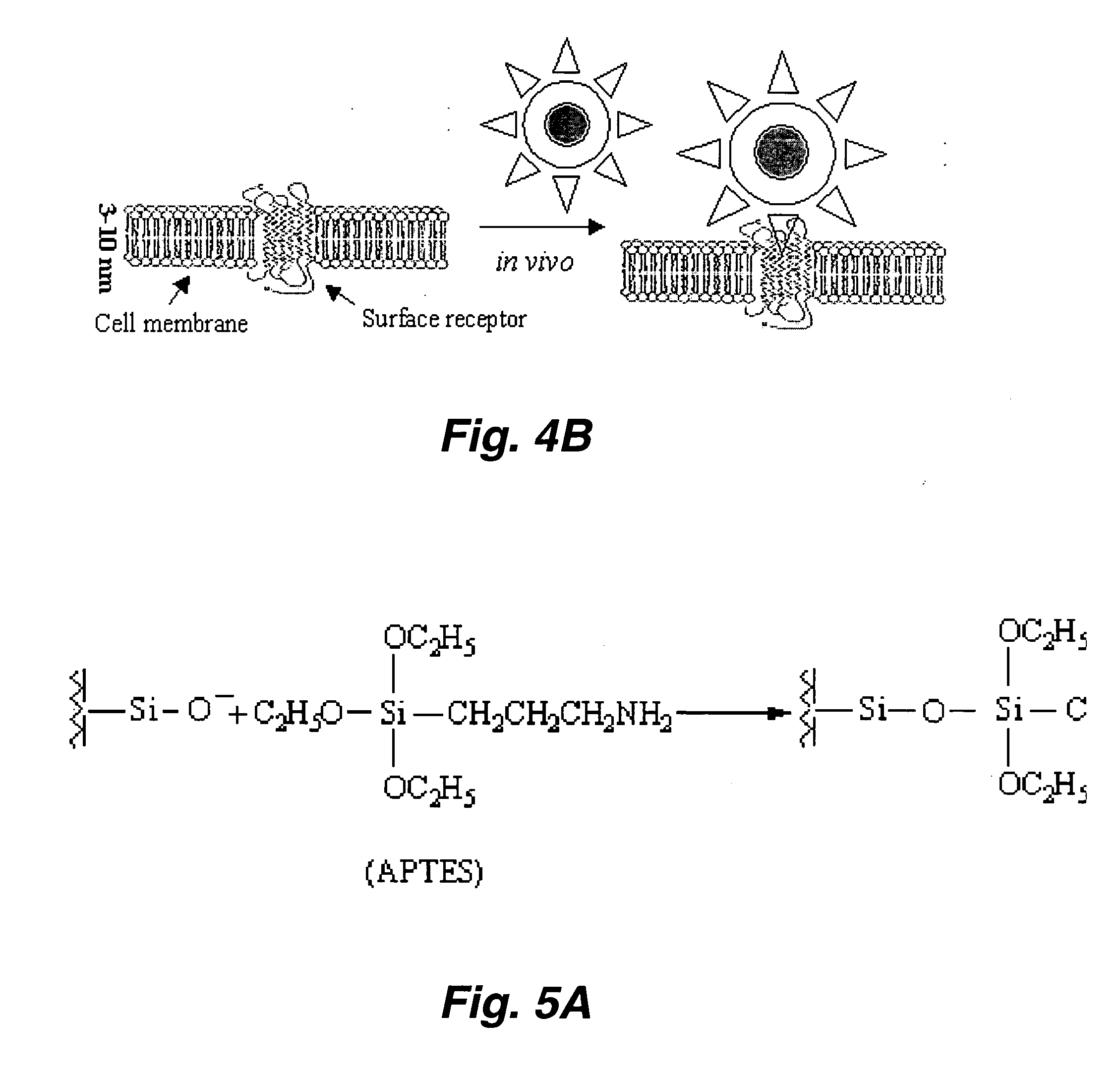[0013] In certain embodiments, mechanism, superparamagnetic particles are coated with certain inorganic or
organic chemicals and linked to antibodies or other targeting moieties in order for them to be attached to the targeted
biological specimen, such as a
disease cell, a viruses, or other
pathogen, etc. Because of the long-range spin-spin correlation in superparamagnetic materials, the spin
population difference is nearly one in contrast to that in nuclear or
electron paramagnetic spin resonance where the spin
population difference is only 10−5. This makes resonance absorption at least 5 orders of magnitude higher than conventional NMR or ESR. As a consequence, spin resonance heating will be 5 orders of magnitude more effective and viable to realistic therapeutic applications. Since the superparamagnetic spin resonance is far away from the spin resonance of any cells in
biological specimen under the same
magnetic field, the absorption and conversion of electromagnetic energy to heat is
highly selective only to the resonating SPM particles and the immediate vicinity. The other regions of the subject (e.g., a
human body can be spared of any harmful side effects.
[0026] The terms “
nucleic acid” or “
oligonucleotide” or grammatical equivalents herein refer to at least two nucleotides covalently linked together. A
nucleic acid of the present invention is preferably single-stranded or
double stranded and will generally contain phosphodiester bonds, although in some cases, as outlined below,
nucleic acid analogs are included that may have alternate backbones, comprising, for example,
phosphoramide (Beaucage et al. (1993)
Tetrahedron 49(10): 1925) and references therein; Letsinger (1970) J. Org. Chem. 35:3800; Sprinzl et al. (1977) Eur. J. Biochem. 81: 579; Letsinger et al. (1986) Nucl. Acids Res. 14: 3487; Sawai et al. (1984) Chem. Lett. 805, Letsinger et al. (1988) J. Am. Chem. Soc. 110: 4470; and Pauwels et al. (1986) Chemica Scripta 26: 1419), phosphorothioate (Mag et al. (1991) Nucleic Acids Res. 19:1437; and U.S. Pat. No. 5,644,048), phosphorodithioate (Briu et al. (1989) J. Am. Chem. Soc. 111 :2321, O-methylphophoroamidite linkages (see Eckstein, Oligonucleotides and Analogues: A Practical Approach, Oxford University Press), and
peptide nucleic acid backbones and linkages (see Egholm (1992) J. Am. Chem. Soc. 114:1895; Meier et al. (1992) Chem. Int. Ed. Engl. 31: 1008; Nielsen (1993) Nature, 365: 566; Carlsson et al. (1996) Nature 380: 207). Other analog nucleic acids include those with positive backbones (Denpcy et al. (1995) Proc. Natl. Acad. Sci. USA 92: 6097; non-ionic backbones (U.S. Pat. Nos. 5,386,023, 5,637,684, 5,602,240, 5,216,141 and 4,469,863; Angew. (1991) Chem. Intl. Ed. English 30: 423; Letsinger et al. (1988) J. Am. Chem. Soc. 110:4470; Letsinger et al. (1994)
Nucleoside &
Nucleotide 13:1597; Chapters 2 and 3, ASC Symposium Series 580, “
Carbohydrate Modifications in Antisense Research”, Ed. Y. S. Sanghui and P. Dan Cook; Mesmaeker et al. (1994), Bioorganic &Medicinal Chem. Lett. 4: 395; Jeffs et al. (1994) J. Biomolecular NMR 34:17;
Tetrahedron Lett. 37:743 (1996)) and non-
ribose backbones, including those described in U.S. Pat. Nos. 5,235,033 and 5,034,506, and Chapters 6 and 7, ASC Symposium Series 580,
Carbohydrate Modifications in Antisense Research, Ed. Y. S. Sanghui and P. Dan Cook. Nucleic acids containing one or more carbocyclic sugars are also included within the definition of nucleic acids (see Jenkins et al. (1995), Chem. Soc. Rev. pp 169-176). Several nucleic acid analogs are described in Rawls, C & E News Jun. 2, 1997 page 35. These modifications of the
ribose-
phosphate backbone may be done to facilitate the addition of additional moieties such as labels, or to increase the stability and half-life of such molecules in physiological environments.
 Login to View More
Login to View More 


